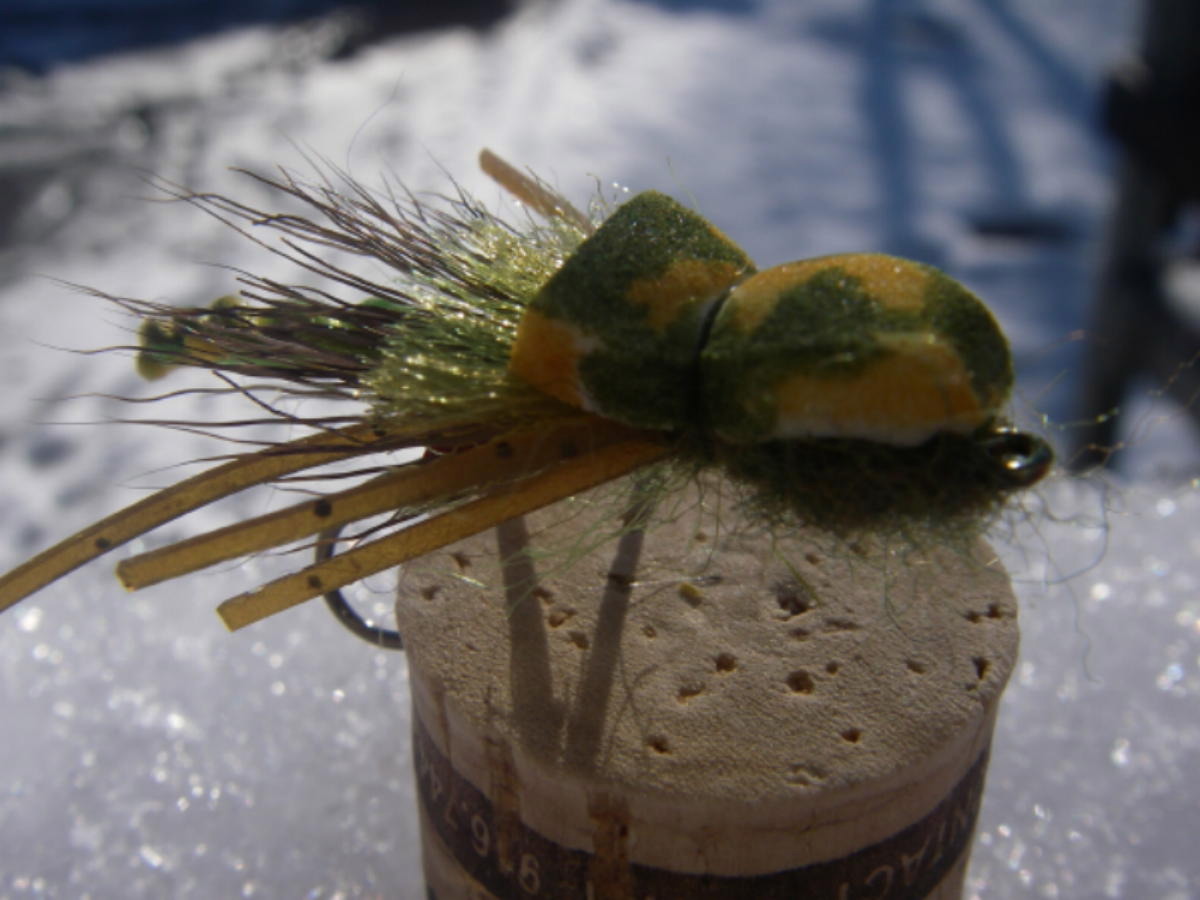 |
|
|
|
Ken Hanley's Furled Hopper This month’s fly is another of Ken Hanley’s creative flies. In the March, 2005 Fly Tyer’s Corner article, we featured Ken’s Furled Damsel—a truly deadly damsel pattern (I have the pictures to prove it). The instructions for “furling” Antron yarn are set out in that article, which is available on the Granite Bay Flycasters web site at www.gbflycasters.org, where past Fly Tyer’s Corner articles are archived. Please refer to that article for the furling instructions. (click here) In speaking with Ken about the design characteristics of the Furled Hopper, he pointed out that the fly’s appeal is in its overall profile; the seductive leg movement achieved by the flat silicone legs; the fact that it lies down in the surface film like a real hopper (so it’s important not to grease the back); and the hopper-like appearance of the foam front of the fly. The fly can be fished on top to suggest a hopper trapped in the surface film; alternatively, it will dive and pop a little if retrieved like a frog. Ken says he also ties it in black to imitate a cricket or a stonefly. One way to make it dive and work is to use an intermediate line. With bass and panfish season rapidly approaching, you need to put this little beauty into your arsenal, folks. But don’t just put it in your bass box, because when hopper season arrives on your favorite stream, you need to be prepared with a bunch of furled hoppers in various colors and sizes in your terrestrial box to fool the wily trout. I haven’t asked Ken about this, but I’m wondering if a giant version, tied in the right colors, might be a good top water striper pattern (hmmmm…) |
||

